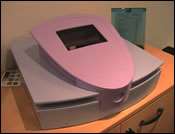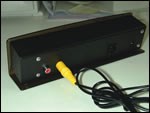Tool-Less Technology Designed For Low Production Runs
A new semi-automated CNC machining and fabrication process called Tool-Less™ Technology had been developed by Tool-Less Plastic Technologies, LLC (Mukilteo, WA).
#electronics #medical #Regulations
A new semi-automated CNC machining and fabrication process called Tool-Less™ Technology had been developed by Tool-Less Plastic Technologies, LLC (Mukilteo, WA) for lower-volume projects ranging from 250 to 500 units per month. Moldmakers can present this technology to their customers as an option to “test” a mold and work out the bugs before designing and building the actual mold. The finished product using this technology can be used for pre-injection mold pilot production runs, ongoing low-volume production, clinical trials or market feasibility tests.
The technology—developed in the ‘80s in France—has been applied primarily to electronics enclosure manufacture in the U.S., typically in low-volume, high value arenas like medical, laboratory instrument, industrial and commercial electronics.
Featured Content
The key to this technology lies in the design. Enclosures that have been designed using this technology are “broken up” into individual pieces and parts to be machined and processed separately, and then solvent bonded to-gether in final assembly. Each part is programmed and machined as a flat pattern using CNC routers. The flat patterns are then processed through a series of secondary operations that add finish details to the edges—like chamfers and radii, and V-grooves to locate the heat bends that are later applied using a CNC heat bender. All interface details have been machined into the flat pattern during the initial CNC operation, so in final assembly there is no clamping or fixturing—parts are simply snapped into the pre-machined locator recesses and grooves almost like Lego™ pieces. Then, they are bonded in place, creating a strong, integral enclosure.
Advantages of this technology include low upfront costs and the ability to make last-minute design changes—even during pro-duction. According to Tool-Less Plastic Technologies President Jim Fowler, it could bridge that “awkward start-up period of product development/ product introduction when a customer can’t economically justify the cost and inflexibility of injection mold tooling, but needs a custom plastic enclosure to prove out the product and bring the prospect back to the moldmaker when product quantities justify tooling.”
RELATED CONTENT
-
In the Trenches: Tools of the Trade
Equipping yourself with the right tools for the job requires time, practice, ownership and maintenance.
-
Considerations for a High-Feed Milling Strategy
High-feed milling is becoming the chosen methodology for removing as much material as possible in the shortest amount of time, as more shops equip themselves with high-speed CNC machining capability and sophisticated CAM programs.
-
Toolmaker Benefits from ERP Software
WorkPLAN Enterprise ERP software integrates with SAP® for greater transparency at German toolmaker HARTING Applied Technologies. The company has 15 WorkPLAN Enterprise workstations in a Citrix terminal server environment enabling managers, controllers, technicians and the sales personnel to have access to relevant data on the central WorkPLAN Enterprise system.















